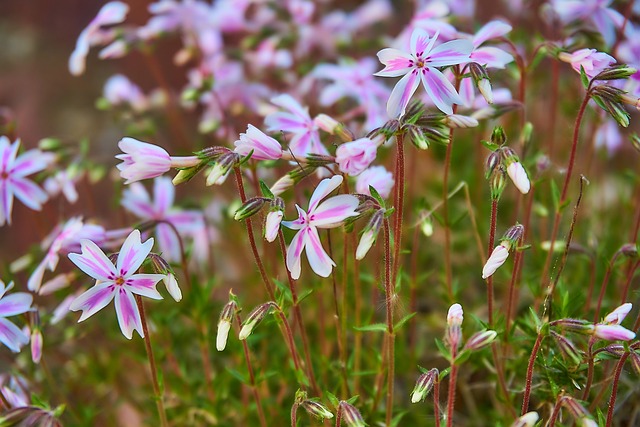When it comes to adding a touch of celestial beauty to your garden, few plants captivate the imagination quite like the Sagina subulata. This diminutive ground cover, also known as the Dwarf Carpet of Stars, resembling a shimmering constellation at your feet, has earned its place as a favorite among garden enthusiasts. This article talks about this plant, exploring its origins, characteristics, cultivation tips, and the magic it brings to landscapes.
A Glimpse into the Celestial Origin
Also known as Irish Moss or Corsican Pearlwort, this plant hails from the verdant landscapes of western Europe. Its botanical name, Sagina subulata, is a nod to the needle-like appearance of its leaves. This charming perennial ground cover has found its way into gardens around the world, transforming patches of soil into captivating celestial tapestries.
Characteristics That Dazzle
At first glance, the Starry Dwarf Carpet appears as a low-growing, emerald-green blanket. Yet, upon closer inspection, its true allure shines through. Delicate, star-like white flowers emerge during the late spring and early summer, creating a breathtaking contrast against the lush foliage. Its compact, moss-like appearance belies its hardiness, making it a versatile choice for various landscapes.
Cultivation Tips for Stellar Success
Caring for Your Celestial Ground Cover
Sunlight: While these stars of the ground enjoy basking in sunlight, they appreciate some afternoon shade in warmer climates. Striking a balance between light and shade ensures optimal growth.
Soil: Well-draining soil is essential to prevent waterlogged roots. Amending the soil with organic matter can enhance its texture and drainage.
Watering: Moderate watering is recommended, particularly during the hotter months. Let the soil dry slightly between waterings, preventing overhydration.
Spacing: When planting, ensure ample spacing between each plant to allow for healthy air circulation and growth.
Mulching: Applying a thin layer of mulch helps conserve moisture and maintain even soil temperatures.
Pruning: Periodic trimming keeps the Dwarf Carpet looking neat and encourages new growth.
Enchanting Uses in Landscaping
Ground Cover Magic
Rock Gardens: Within rock gardens, its compact form shines, fitting seamlessly between stones to craft an authentic natural vista. This plant’s presence adds depth and texture, elevating the garden’s allure.
Pathway Borders: Along garden pathways, this ground cover weaves a whimsical border reminiscent of starlit paths. The juxtaposition of its vibrant foliage against the path’s solidity creates a captivating visual contrast.
Between Pavers: Enhancing hardscapes, it fills gaps between pavers with lush stars, softening the rugged terrain with a touch of greenery. This transformation harmoniously marries nature and design.
Containers: Cascading over container edges, it conjures a touch of magic in patio arrangements. This lively drapery brings vibrancy to the arrangement, infusing the space with a sense of enchantment.
Eco-Friendly Benefits
Erosion Control: Its dense growth prevents soil erosion, making it an effective erosion control measure on slopes.
Biodiversity: Providing shelter for beneficial insects and pollinators, it contributes to your garden’s biodiversity.
Air Quality: Similar to all plants, it contributes to enhancing air quality by absorbing carbon dioxide and emitting oxygen into the environment.
The benefits of the Dwarf Carpet of Stars goes beyond its ethereal appearance. This unassuming yet captivating ground cover has the power to transform ordinary patches of earth into celestial landscapes. With its charming flowers, hardy nature, and versatility in garden design, Sagina subulata is truly a star worth welcoming into your garden.







